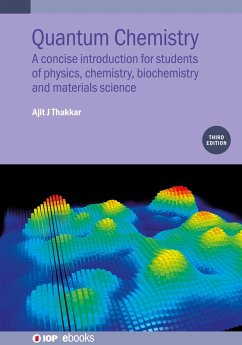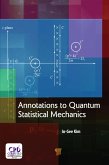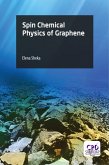This book provides non-specialists with a basic understanding of the underlying concepts of quantum chemistry. It is both a text for second- or third-year undergraduates and a reference for researchers who need a quick introduction or refresher. All chemists and many biochemists, materials scientists, engineers, and physicists routinely use spectroscopic measurements and electronic structure computations in their work. This book is designed to help the novice user of these tools achieve a basic understanding of the underlying concepts of quantum chemistry. The emphasis on explaining ideas rather than enumerating facts or presenting procedural details makes this an excellent foundational text.
This new edition features extensive changes to increase clarity and to accommodate new material, including additional problems and a comprehensive list of resources while preserving the book's concise and accessible nature. The groundwork is laid in the first two chapters which deal with molecular symmetry and the postulates of quantum mechanics, respectively. Symmetry is woven through the narrative of the next three chapters dealing with simple models of translational, vibrational, and rotational motion that underlie molecular spectroscopy, statistical thermodynamics, and the electronic and vibrational structure of solids. The next two chapters deal with the electronic structure of the hydrogen atom and hydrogen molecular-ion. Having been armed with a basic knowledge of these prototypical systems, the reader is ready to learn the gist of the Hartree-Fock model and related ideas used to underpin methods dealing with many-electron systems. These somewhat abstract ideas are illustrated with the Hückel model of planar hydrocarbons in the next chapter. There follows a qualitative outline of how to proceed beyond the Hartree-Fock model and cope with the complexities of many-electron atoms and molecules. The book concludes with an introduction to computational quantum chemistry; it explains the bare minimum of technical choices that must be made to do meaningful density functional theory computations using software packages.
This new edition features extensive changes to increase clarity and to accommodate new material, including additional problems and a comprehensive list of resources while preserving the book's concise and accessible nature. The groundwork is laid in the first two chapters which deal with molecular symmetry and the postulates of quantum mechanics, respectively. Symmetry is woven through the narrative of the next three chapters dealing with simple models of translational, vibrational, and rotational motion that underlie molecular spectroscopy, statistical thermodynamics, and the electronic and vibrational structure of solids. The next two chapters deal with the electronic structure of the hydrogen atom and hydrogen molecular-ion. Having been armed with a basic knowledge of these prototypical systems, the reader is ready to learn the gist of the Hartree-Fock model and related ideas used to underpin methods dealing with many-electron systems. These somewhat abstract ideas are illustrated with the Hückel model of planar hydrocarbons in the next chapter. There follows a qualitative outline of how to proceed beyond the Hartree-Fock model and cope with the complexities of many-electron atoms and molecules. The book concludes with an introduction to computational quantum chemistry; it explains the bare minimum of technical choices that must be made to do meaningful density functional theory computations using software packages.
Dieser Download kann aus rechtlichen Gründen nur mit Rechnungsadresse in A, D ausgeliefert werden.









